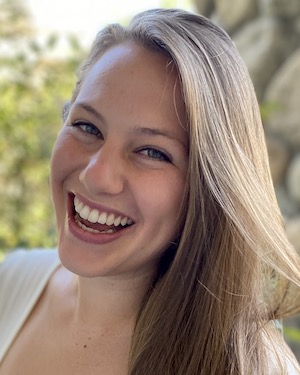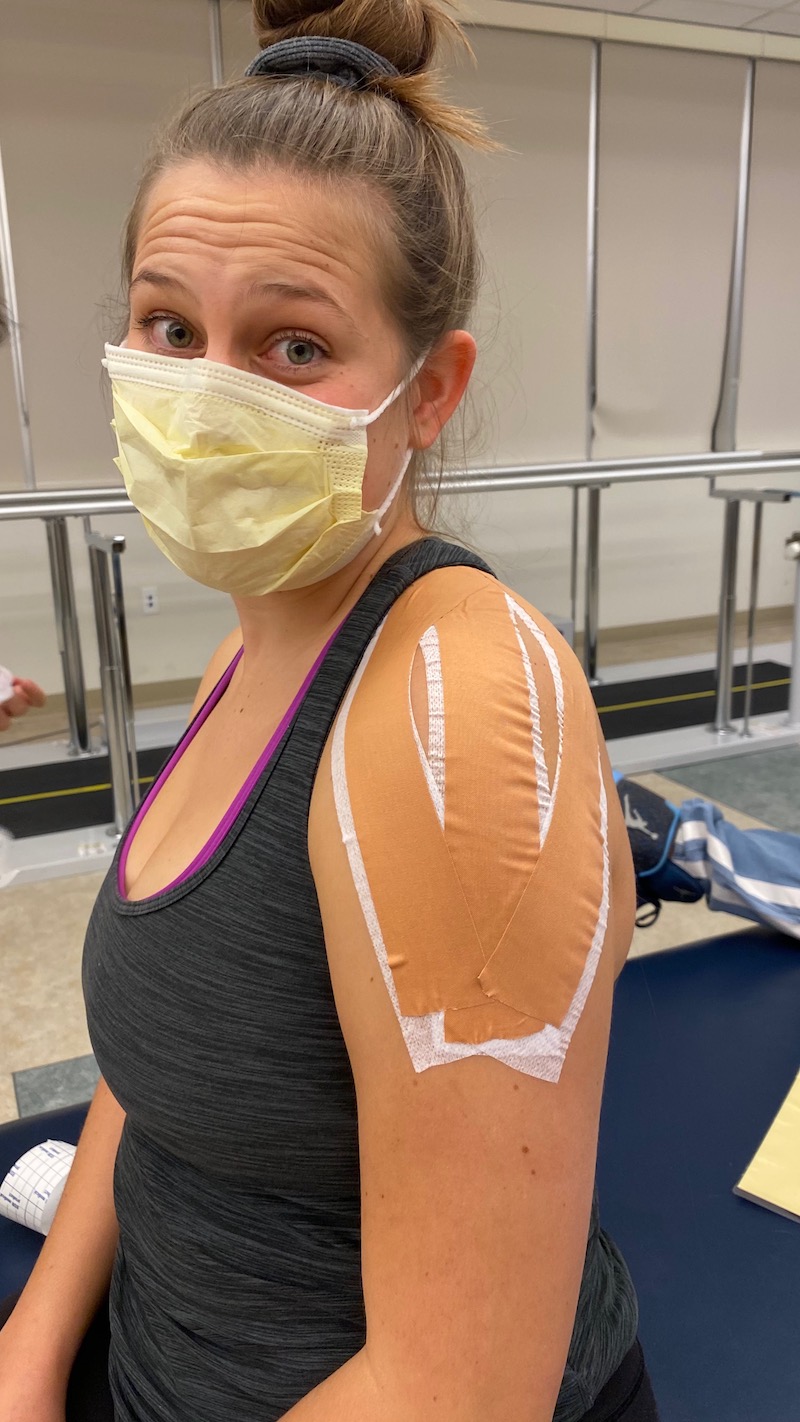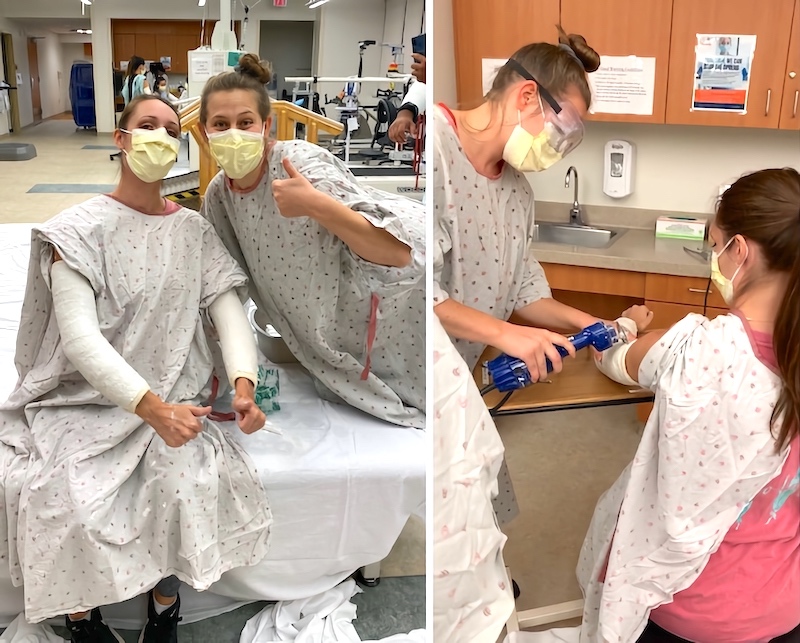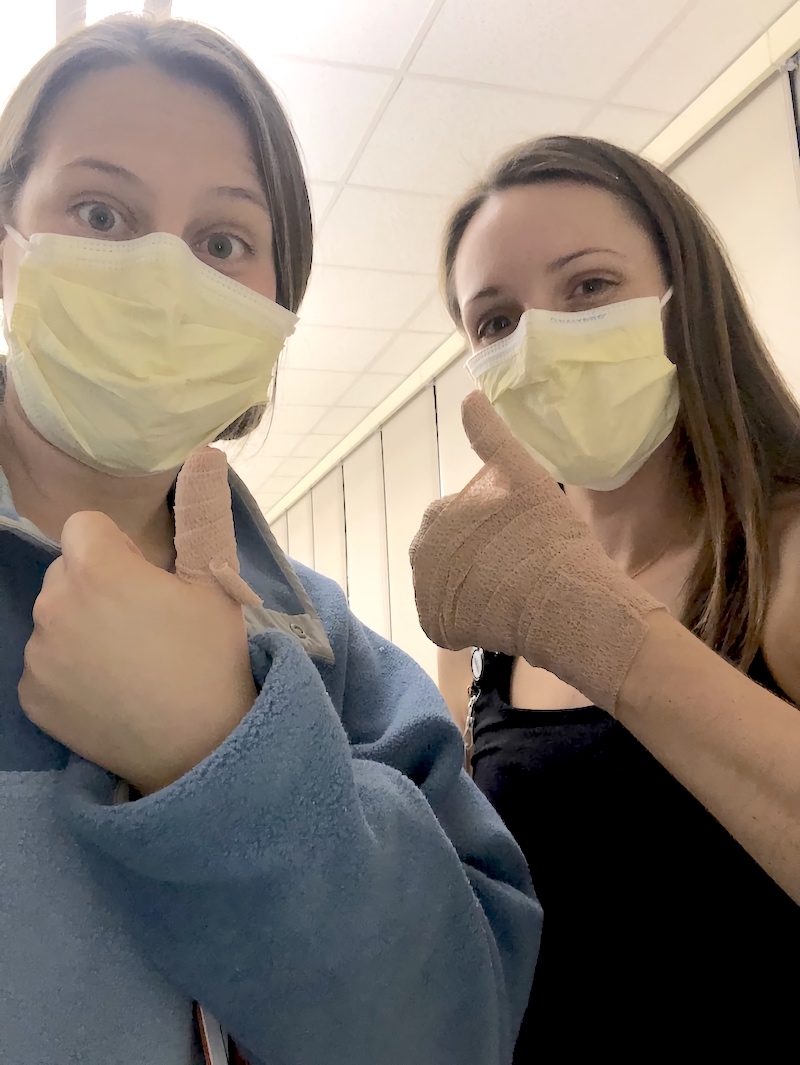Savi’s Electives Experiences

October 7, 2020
by Savi
Over the past two semesters, I have had the opportunity to choose between a variety of elective courses to take in order to dive deeper into the subject matter I am interested in and begin my journey from an OT generalist to specialist. As a second year in the Master’s program, students are given the chance to take 12-14 units of elective coursework so that they can begin to focus in an area of interest.
When I began this Master’s program I was extremely interested in taking the OT 561: Occupational Therapy in Acute Care elective, as I have always been interested in pursuing a career in acute care. Unfortunately, this elective was no longer offered this semester as they wanted to keep all students, faculty, and patients healthy and at a safe distance. Although this was sad news for me, this decision also allowed me to explore electives I wouldn’t have otherwise! Now looking back on my decisions and experiences I could not have imagined it any other way! I love all of my electives and have learned such valuable information that will help guide me in whatever practice setting I choose in the future. Here is a glimpse into my electives and why I chose them!
OT 574: Enhancing Motor Control for Occupation
This semester I was fortunate enough to have been randomly selected to take the Motor Control elective at the California Rehabilitation Institute. This course has opened my eyes to so many unique and fun things OTs can do in an inpatient rehabilitation setting. Before beginning this course I knew that I wanted to hopefully work as an OT in an inpatient rehabilitation or acute setting after graduation, but was worried I wouldn’t have experience working with patients in either of these settings. This course provided me with four hours of weekly clinical experience with patients guided by an assigned clinical instructor, as well as lecture material focused on providing tangible methods for remediation of motor control problems following upper motor neuron lesions. In lectures, we spent half the time learning the theories and concepts of motor control and motor learning, and then the other half applying our knowledge and skills in practice. Through this class, I learned how to complete scapular and trunk assessment, facilitation, and mobilization, shoulder subluxation positioning and taping, inhibitory casting, neuromuscular electrical stimulation, edema management, and much more! Check out the pictures at the bottom to see what these look like. I had a lot of fun working with patients and applying my knowledge in real-time with the assistance of experienced OTs.
OT 575: Dysphasia Across the Lifespan
As a food lover myself, I have always listed eating as my #1 favorite occupation. After working in a few pediatric settings and seeing how impactful OTs can be in the feeding process, I wanted to learn more about our impact across the lifespan. This course has provided me with an immense amount of knowledge regarding the various assessment and treatment strategies used for patients and caregivers. I have also gained a greater understanding of the oral, pharyngeal, and esophageal anatomical structures involved in swallowing and how they relate to normal and abnormal swallowing. On the last day of class we all received a large box of delicious snacks to eat and test out. This helped us gauge the sensory qualities, understand the effects chewing has on consistency and texture, and brainstorm fun activities with each snack option to engage our future clients.
OT 566: Healthcare Communication with Spanish-Speaking Clients
¡Hola! Mi nombre es Savi y yo soy su terapeuta ocupacional. I am extremely passionate about developing a comfortable and safe environment for all my clients. During my time completing observation hours in San Diego and fieldwork in Los Angeles, I have noticed that a large quantity of the patients and clients I have worked with are primarily Spanish speaking. Because of the language barrier, I felt as though I am not able to make them feel as comfortable as I could. I, therefore, wanted to take advantage of this opportunity to learn how to communicate in Spanish at an elementary level in a therapeutic context. By doing so I have learned how to say common OT phrases and terms in Spanish, to facilitate better connections and relationships with my future clients. Dr. Delgado has brought in OTs from a variety of settings to help us learn context-specific and cultural terms and phrases. Gracias, Profesor Delgado!
OT 564 Sensory Integration Theory
I decided to take sensory integration (SI) theory because I wanted to get a better understanding of the neuroscience backing and foundation for sensory integration. After completing the pediatrics immersion, I didn’t feel confident about the level of understanding I had regarding SI in comparison to other students I had spoken to in my cohort. This made me extremely nervous since SI is so important and prevalent in OT practice across all settings. I, therefore, wanted to get a better grasp on the neurobehavioral principles of Sensory Integration Theory before entering into my Level II fieldwork and eventually sitting for the NBCOT exam. This class did just that!

Showing off my shoulder taping, which is used to assist with realigning and supporting a shoulder joint with subluxation.

Practicing serial casting on classmate Alana Schoenhals to manage tone. We even got to saw off the cast we made!

Classmate Alana Schoenhals and I showing off our compression bandage treatment after doing retrograde massage on one another for edema management.
⋯
Next by tag Classes ⟩
⋯





